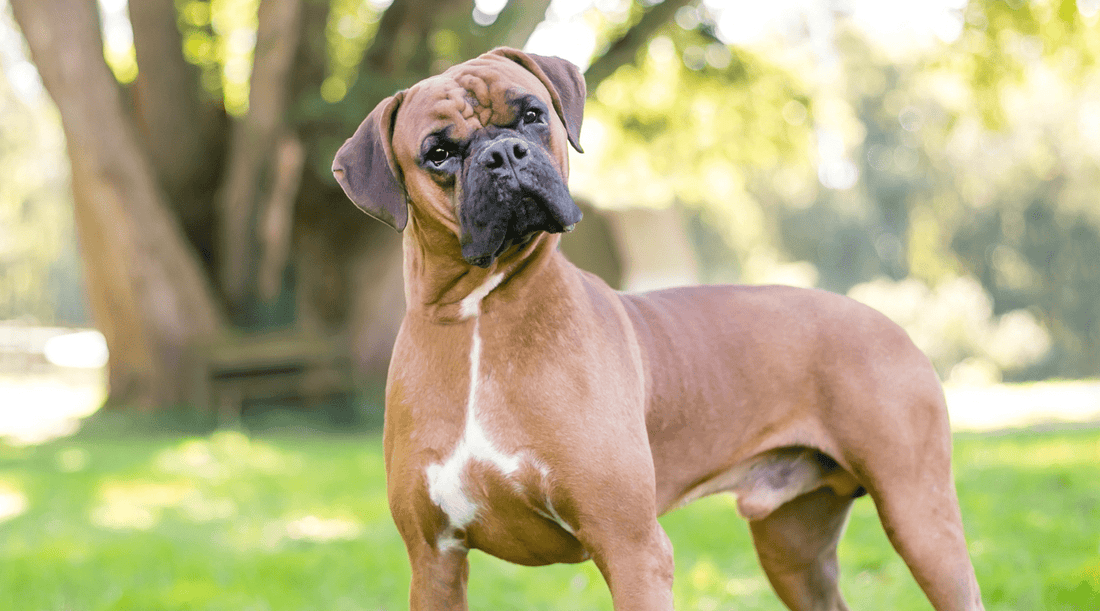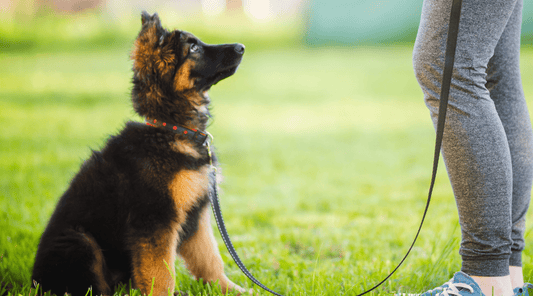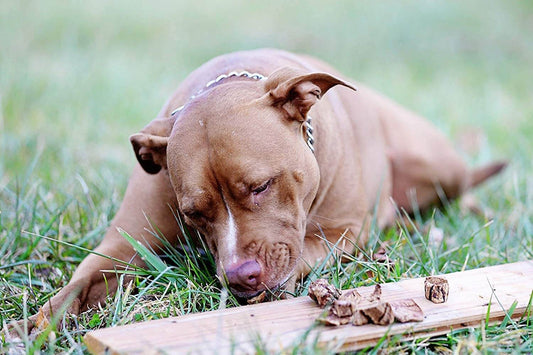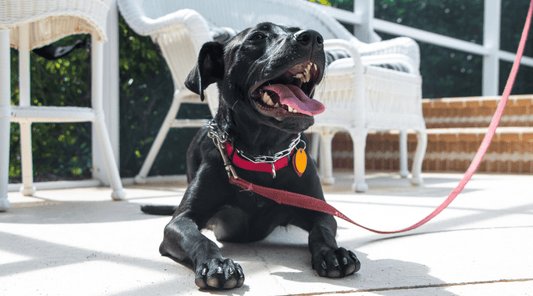
Understanding Canine Communication: Dog Body Language in Action
Dawn Miller Feb 14, 20255 Minute ReadThere's more to dog body communication than most people realize. From dog body language to types of barks, whimpers, growls, our furry companions have learned how to talk to us—very clearly in some instances—but are we listening?
Last weekend, I attended my community's annual Polar Dog Plunge at the lake. We readied ourselves to jump with our dogs into the frigid (not frozen) water to raise money for the children's summer camp program.
I chose Bruno, my lab mix, because he loves water. But as we lined up on the dock, his tail wasn’t a usual happy wag.
Instead, it was stiff and slightly lowered. His ears flicked back and forth, and he kept licking his lips. If I hadn’t known better, I might’ve thought Bruno was as nervous as I was about jumping into 35-degree F water.
Then I realized what was happening. He was responding to my body language.
Dogs are very good at reading human body language to understand us. Here are some ways we can return the favor.
Dog Body Language: It Means Something
Even in humans, an estimated 90% of communication is non-verbal. Dogs are probably closer to 99%. They speak with their movement and posture to express emotions and intentions.
Canine communication is very straightforward. By learning this language, we humans can:
- Strengthen our bond
- Respond appropriately to the needs they communicate
- Prevent misunderstandings or frustration when they're not responding as we'd expect. Take Bruno. He loves to jump in the lake, and the cold usually does not deter him. So, I knew something was wrong.
- Improve the effectiveness of behavioral training by using positive reinforcement training at the right time
- Enhance dog health (mental, emotional, and physical health), as your dog feels "heard" when something isn't right.
When we learn to interpret canine communication correctly, we can meet our dogs where they are instead of expecting them to meet us on human terms.
How to Read Dog Body Language
The Tail: It's More than a Wag!
I've heard from people, "he's wagging, so he must be happy". This is a common misconception. Even something as seemingly obvious as a tail wag has nuance.
Just take a look at the variation!
- Loose, mid-level wag - A relaxed, friendly dog.
- High and stiff wag - Alertness or possible agitation.
- Low, slow wag - Uncertainty or nervousness.
- Tucked tail - Fear or submission.
- Fast, exaggerated wag - Excitement or even overstimulation.
The Eyes: Windows to Their Mood
When was the last time you really looked into your dog's eyes and thought about what you saw? So often, we look at something familiar and don't see it all.
So, I encourage you to take some time to look next time. You might see:
- Soft, relaxed eyes - A content and comfortable pup.
- Wide, whale eyes (showing lots of white) - Anxiety or stress.
- Direct, hard stare - A warning sign, often preceding aggression.
- Avoiding eye contact - Submission or discomfort.
The Ears: They Hear More Than We Do
The movements will be a little more subtle on floppy ear dogs. But you'll notice the following when you pay attention to dog ear movements:
- Perked forward ears - Interest or curiosity.
- Pinned back ears - Fear, stress, or submission.
- Neutral ears - A calm and relaxed dog.
The Mouth: It's for More Than Barking
- Relaxed, slightly open mouth - A happy, calm dog.
- Lip licking or yawning - A sign of anxiety or appeasement.
- Tight, closed mouth - Possible discomfort or tension.
- Growling or showing teeth - A clear warning sign to back off.
The Whole Body: Posture and Movement
- Loose, wiggly body - A friendly and confident dog.
- Crouched, tense body - Fear or submission.
- Stiff, still body - A serious warning—this dog may be ready to react.
- Play bow (front paws stretched out, rear end up) - A classic invitation to play. It's like saying, "Come on, chase me." The play bow is also used as a submissive signal. A dog may use it with a stranger dog to say, "I'm not going to hurt you. You want to play with me?"
Dog Pack Mentality and How It Impacts Body Language
It's interesting to watch dogs with other dogs and various humans in your household. They may use very different body language depending on who they're around.
Dogs are social animals with an innate sense of social hierarchy. If your dog is always jumping on you uninvited but is more reserved with your partner, it's because you hold a different position in the dog's "pack".
Here's some pack body language you might notice:
- Submissive signals (like rolling over to expose the belly or licking another dog’s mouth) show deference.
- Dominance posturing (standing tall, placing a paw over another dog) establishes hierarchy.
- Dominance posturing with aggressive body language like a lowered head pulled in, making the dog look larger and more muscular, a stiff tail, staring eye contact, and mounting (which is not a gender-exclusive behavior)
- Resource guarding (stiffening, growling over food or toys) is an instinct tied to survival. It says, "You haven't earned my trust yet."
How Treats Can Reinforce Positive Canine Communication
Assess your dog's body language during training to make sure you're rewarding them at the best time to deliver positive reinforcement.
For example:
Reward Calm Behavior
If your dog's body language is relaxed in a new situation, offer a high-value treat to reinforce that behavior. A marrow-filled dog bone works great! This can also work during thunderstorms/fireworks. When you see that nervous behavior starting, watch them closely. Find a calm moment to give them a treat.
Build Confidence
Nervous dogs can learn to associate new experiences with good things (like a tasty treat). Just be careful not to give a dog bone while they're exhibiting nervous behavior. Wait until they venture out. Reward that effort, even if only a few steps. For dogs who need incremental confidence building, consider a small handful of high value dog treats, like beef lung treats. They're low calorie and nutritious. So, you can give your dog several, one baby step at a time.
Redirect Unwanted Reactions
If your dog stiffens up or acts afraid of strangers, find a moment of relaxation to reward them with high value treats.
Single-ingredient treats, like K9 Connoisseur’s dog bones and chews, are perfect for reinforcing training and promoting good dog health.
Want to improve your dog’s behavior with positive reinforcement? Sign up for our Free 7-Day Dog Training Challenge and start using treats the right way today!
Strengthen Your Bond by Learning the Dog Body Language
Now, back at the Polar Dog Plunge. I knelt beside Bruno and spoke softly, giving him a treat. I improved my body language to communicate calmness.
His tail relaxed slightly, and his ears perked toward me instead of flicking backward.
He was ready to do this!
Understanding your dog’s body language is like learning a new language—it takes practice, patience, and attention to detail. But once you start noticing the signs, you’ll communicate better and make life happier and healthier for both of you.





